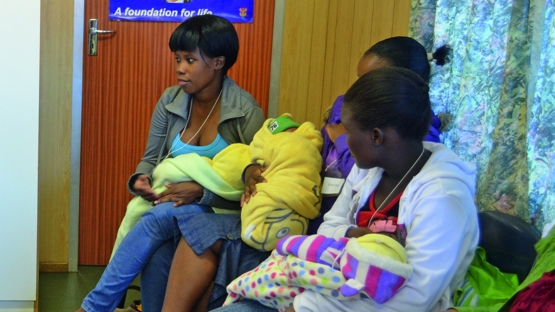In Africa, undernutrition is responsible for 45% of child deaths under five years of age. Stunting, the most widespread effect of undernutrition, can be prevented with interventions for good nutrition in early life. Participants at a conference in Morocco this month discussed how to encourage mothers in Africa to exclusively breastfeed their infants from birth to six months of age, providing all the nutrients the babies need and improving their immune systems. A technique using stable isotopes allows health officials to monitor exclusive breastfeeding rates and thereby the success of their breastfeeding promotion campaigns.
“For years the IAEA has been working with Member States in promoting the use of the deuterium oxide dose-to-mother method, a stable isotope technique that allows health workers to collect data on breastfeeding practices in a precise, specific and accurate fashion,” said Victor Owino, Nutrition Scientist at the IAEA, and a keynote speaker at a plenary session at the 7th African Nutrition and Epidemiology Conference, entitled ‘Nutrition Dynamics in Africa: Opportunities and Challenges for Meeting the Sustainable Development Goals’, held from October 9-14 in Marrakech, Morocco. (See the Box below for more on the technique).
The session ‘Use of Stable Isotopes Techniques in Nutrition Assessments and Tracking of Global Targets Post-2015,’ which attracted over 300 participants, introduced the comparative advantage of the deuterium oxide dose-to-mother technique in assessing breastfeeding practices over the traditional method of asking mothers to volunteer information on their breastfeeding habits.
“Data from our Member States shows that mothers sometimes overestimate their breastfeeding rates, up to 40% compared to the results obtained from the stable isotope technique,” said Owino. “This technique can objectively assess the amount of breast milk consumed and whether the infant is exclusively breastfed, and how this is modified by the introduction of solid foods from six months of age.”
Proper nutrition in the first 1000 days from conception to two years of age is key to fighting stunting in children and to reducing the risk of non-communicable diseases later in life. The World Health Organization recommends exclusive breastfeeding for the first six months of life and that breastfeeding be continued to at least two years and beyond. The deuterium dilution technique can shed light on children’s body composition and therefore aid the assessment of their quality of growth.
Gad Sam Tukamushaba from Uganda said stable isotope applications were very important for his country. “It is evident that current data has errors which can be avoided with the use of isotope techniques.”
In Kenya, the use of stable isotopes is a welcome innovation in the area of infant nutrition, according to Maryanne Wamahiu, a nutrition graduate student at Stockholm University. “This method should continue to be promoted, if not as a primary nutrition assessment approach, then as a means for validating other methods.”
Francis B. Zotor, President of the African Nutrition Society, said the IAEA shed light on an important new technique that can help Africa. “The conference outcome sends a strong signal to the world that Africa is ready to move forward with its nutrition agenda – which includes this new technique.”
In an effort to share important findings from studies using nuclear techniques, the IAEA will organize a symposium on how stable isotope techniques help optimal formulation and impact assessment of food fortification programmes at the Micronutrient Forum Global Conference to be held in Cancun, Mexico from Oct 23-28.





